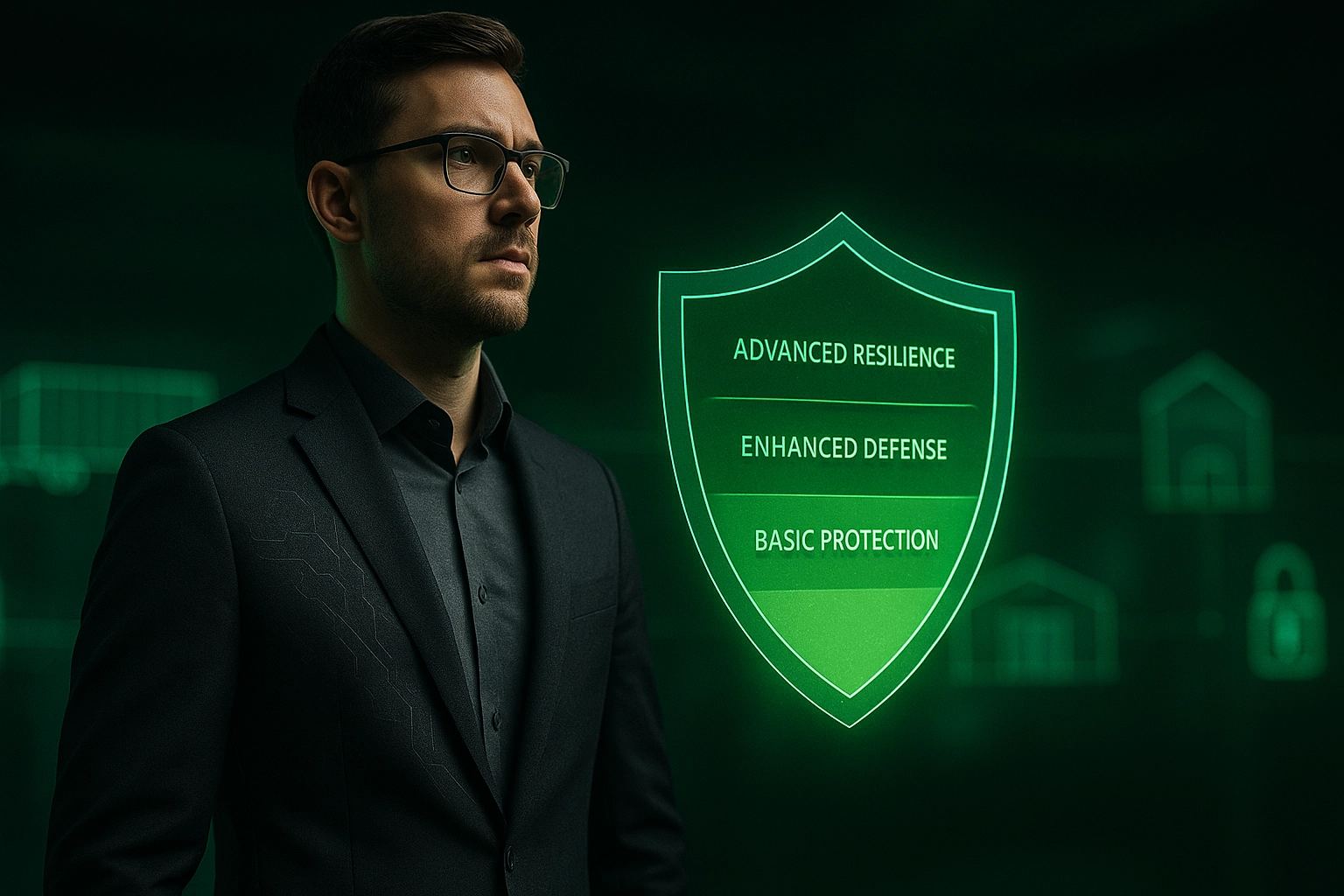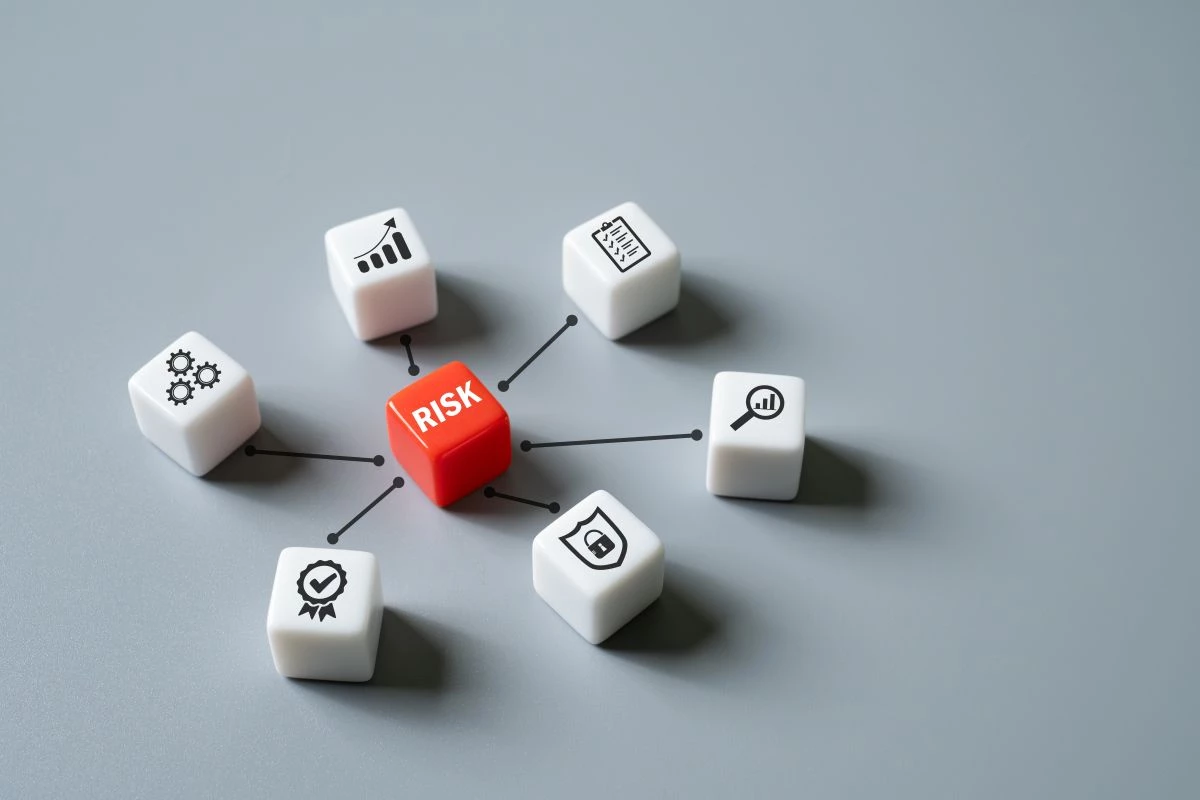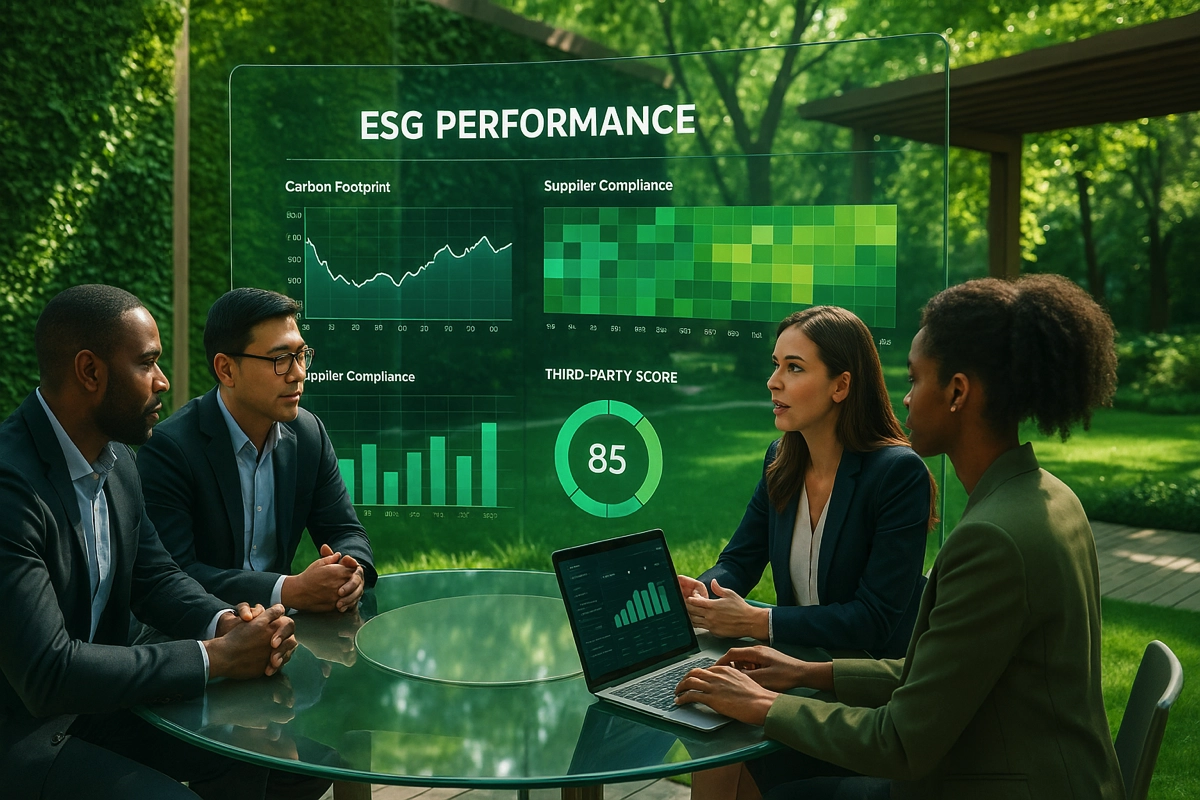Understanding Third-Party Cybersecurity Maturity: Keys to Effective Assessment

Third-party governance has become a major strategic issue in an economic context marked by the growing interdependence between companies and their external partners. According to Gartner, 45% of cyberattacks in 2025 will originate from third parties, highlighting the urgency of a structured evaluation approach. Operational resilience against these threats now requires a shift from simple TPRM (Third Party Risk Management) to a true TPGRC (Third Party Governance & Risk Control) framework.
Assessing the cybersecurity maturity level of third-party partners is a complex task that requires deep expertise and the right tools. By integrating European standards and relying on a collaborative evaluation process, organizations can effectively measure their progress in securing their ecosystem. This approach is particularly relevant for local authorities, which manage numerous contractors in the framework of public procurement while having to meet strict regulatory requirements.
In this article, we will explore how to establish and use an evaluation model to identify the strengths and weaknesses of your third-party partnerships in terms of cybersecurity, drawing on expertise gained from evaluating 430,000 third parties worldwide.
What Is Third-Party Cybersecurity Maturity?
Third-party governance refers to an organization’s ability to effectively assess, manage, and monitor the digital risks associated with its external partners. According to NIST, cyber supply chain risk is defined as “the potential for harm that may result from suppliers, their supply chains, their products, or their services.” This structured approach makes it possible to accurately identify the organizational robustness of each third party.
Within a collaborative evaluation framework, organizations can demonstrate their adherence to security best practices and thus reassure their partners. This evaluation is based on the analysis of various criteria, such as vulnerability management, continuous staff training, and the implementation of appropriate security policies. Each aspect is analyzed according to a predefined maturity model, offering a clear view of progress made.
The construction sector is a perfect illustration of these challenges, with the management of multi-tier subcontractors requiring rigorous evaluation of on-site contractors. Compliance with HSE standards and worker qualifications are key maturity indicators for this specific industry.
Why Maturity Assessment Matters
To ensure adequate protection of sensitive data, it is essential to regularly assess the cybersecurity maturity level of each third-party partner. According to the 2023 Wavestone study, while the cyber maturity of large French organizations has improved (+3 points), it remains generally insufficient with an average score of 49%. This reality underscores the need for a structured evaluation approach.
Collaborative evaluation not only holds third parties accountable but also strengthens the overall security of the company. By identifying potential gaps in a partner’s security framework, an organization can anticipate risks before they become critical. This approach is particularly relevant to the industrial sector, where supply chain risks and ICPE compliance require continuous monitoring with real-time alerts.
This process generally involves a thorough analysis of security practices, modeled on a recognized cybersecurity framework such as ISO 27001/27701. The results serve as a basis for defining corrective or preventive actions and, ultimately, streamlining contractual relationships with third parties. In this sense, good third-party governance improves an organization’s operational resilience while ensuring the continuity of its business operations.
Want to quickly assess your partners’ cybersecurity maturity?
Discover our integrated platform that simplifies collaborative evaluation throughout the entire relationship lifecycle.
Practical Implementation of Maturity Assessment
Implementing a cybersecurity maturity assessment requires a structured approach and the right tools. An integrated platform designed for this process simplifies the task while ensuring rigor. The use of a standardized evaluation grid is fundamental to structuring the analysis with objective, measurable criteria. According to the U.S. Department of Energy, organizations can complete a full self-assessment of their cybersecurity maturity in a single day with the right tools—demonstrating the efficiency of a well-structured methodology.
Collaborative evaluation should rely on a recognized framework detailing all aspects of third-party governance. The C2M2 (Cybersecurity Capability Maturity Model) framework, for example, offers a 10-domain structure covering more than 350 cybersecurity practices, each linked to a specific maturity level. This approach allows for effective categorization of each partner’s maturity level.
The retail and e-commerce sector is a prime example, particularly for businesses managing international marketplaces. These companies must assess the compliance of numerous third-party sellers while adhering to varying regulations across countries. Leveraging documentary AI for automated anomaly detection can optimize this complex evaluation process.
Key Ingredients for a Successful Maturity Model
To develop a relevant maturity model, several core elements must be included. First, adopting a common language around third-party governance facilitates communication and aligns goals among stakeholders. Aligning with internationally recognized market standards, such as ISO or NIST frameworks, ensures robustness and recognition across all stakeholders. According to NIST, an effective model should cover five essential functions: identify, protect, detect, respond, and recover—forming a complete cybersecurity framework.
For truly effective evaluation, four essential elements must form the foundation of high-performing third-party governance:
- A structured methodology with measurable criteria
- A collaborative evaluation process involving all stakeholders
- Continuous monitoring mechanisms to quickly detect deviations
- An adaptive approach capable of evolving with new threats and regulations
Clear, measurable indicators ensure objective assessment. Metrics may include the number of incidents handled, response time to attacks, and the existence of regular training sessions. BitSight notes that “in an ideal cybersecurity maturity model, a variety of processes, tools, and people are aligned and working together to effectively mitigate risk.”
Business continuity is another key factor, allowing adaptation to fast-paced technological changes and new attack methods. In the public sector, local authorities face specific challenges linked to public procurement compliance and GDPR. Their maturity model must integrate these regulatory specifics while considering the budget constraints typical of public organizations.
Anticipating regulatory changes and investing in innovative technologies strengthens an organization’s long-term security posture while fostering a culture of continuous improvement essential for the sustainability of the program.
Challenges and Opportunities in Adopting the Maturity Model
Implementing a cybersecurity maturity model presents challenges, such as initial cost and resistance to organizational change. This is precisely why a collaborative approach is so valuable. By pooling evaluation efforts across multiple organizations, Aprovall helps distribute costs while increasing the relevance of results.
Recent studies show that failures in implementing maturity models often stem from their complexity and lack of alignment with organizational priorities. As Intone points out, “these models are sometimes seen as theoretical and disconnected from practical realities, limiting their usefulness and effectiveness.” A collaborative methodology changes this perception by actively involving third-party partners in a mutual improvement process rather than a traditional audit.
The EUCS certification represents an additional but strategic challenge for European organizations concerned with data sovereignty. This certification ensures that sensitive data remains protected under the strictest European standards—a particularly critical issue in construction, where contractor qualification often involves sharing confidential documents related to worksites and HSE standards.
Real-time multi-source monitoring offers a major opportunity to transform how organizations oversee their third parties. This approach enables rapid anomaly detection and intervention before issues escalate into critical incidents. Adopting such technology significantly contributes to reducing supplier fatigue by minimizing redundant information requests to external partners.
Enterprise Security and Continuous Improvement
Operational resilience relies on a structured continuous improvement process.
For industrial organizations facing complex cyber-industrial risks, continuous improvement becomes a strategic imperative. These companies must not only regularly assess their own systems but also those of their third parties involved in the production chain.
The integration of an evolving knowledge base allows organizations to capitalize on past experiences and anticipate future threats. This collaborative approach, supported by a community of certified experts, encourages best-practice sharing and rapid adaptation to new threats.‘experts certifiés, favorise le partage des meilleures pratiques et l’adaptation rapide aux nouvelles menaces.
Ready to transform your third-party governance approach?
Our experts can help you implement a maturity model tailored to your industry.
Towards Mature and Collaborative Third-Party Governance
Assessing the cybersecurity maturity of third parties is a fundamental pillar of modern organizations’ operational resilience. In this article, we explored the key elements of a structured evaluation approach—from understanding the concept to its practical implementation.
The shift from traditional TPRM to true Third-Party Governance (TPGRC) marks a strategic evolution for organizations seeking to secure their digital ecosystem. This approach, based on collaborative evaluation rather than traditional auditing, significantly reduces supplier fatigue while improving assessment quality.
Organizations adopting a maturity model tailored to their sector—whether public, construction, industrial, or retail—gain increased visibility into third-party risks and enhanced anticipation capabilities. The integration of advanced technologies such as documentary AI and real-time multi-source monitoring turns this approach into a genuine competitive advantage.
In a constantly evolving European regulatory context (DORA, NIS 2, CSRD), adopting an integrated third-party governance platform becomes not only a guarantee of compliance but also a lever for long-term performance and organizational robustness.
These articles might interest you
-
 25 June 2025Manage Your Supplier Assessments by Context and Project for a 360° ViewSolutionsUnlock the Power of Context-Based Evaluations: Gain Clarity and Impact Supplier assessments are often structured as a top-down relationship: from the client (or buyer) to a panel of suppliers. However, these suppliers frequently operate within shared contexts — whether that’s a product, a contract, or an entire supply chain. Managing third-party evaluations by context gives […]
25 June 2025Manage Your Supplier Assessments by Context and Project for a 360° ViewSolutionsUnlock the Power of Context-Based Evaluations: Gain Clarity and Impact Supplier assessments are often structured as a top-down relationship: from the client (or buyer) to a panel of suppliers. However, these suppliers frequently operate within shared contexts — whether that’s a product, a contract, or an entire supply chain. Managing third-party evaluations by context gives […]Read more
-
 11 June 2025Third Parties: Why You Can No Longer Ignore Risk ConvergenceSolutionsWhen it comes to supplier management, focusing on a single risk often means exposing yourself to many others. For a long time, companies have concentrated on financial risks: solvency, credit ratings, payment delays… But recent crises have proven that supplier risks are multiple, systemic, and deeply interconnected. A supplier may be financially sound… yet vulnerable […]
11 June 2025Third Parties: Why You Can No Longer Ignore Risk ConvergenceSolutionsWhen it comes to supplier management, focusing on a single risk often means exposing yourself to many others. For a long time, companies have concentrated on financial risks: solvency, credit ratings, payment delays… But recent crises have proven that supplier risks are multiple, systemic, and deeply interconnected. A supplier may be financially sound… yet vulnerable […]Read more
-
 18 April 2025ESG Strategy for the Supply Chain: Assessment and Management MethodsSolutionsThe ESG strategy (Environment, Social, Governance) has become a fundamental pillar of corporate operational resilience. According to the 2025 Supply Chain ESG Risk Outlook by LRQA, over half of sourcing countries are now classified as high or extreme ESG risk, challenging the common perception that Western markets are inherently safer. This new reality demands a […]
18 April 2025ESG Strategy for the Supply Chain: Assessment and Management MethodsSolutionsThe ESG strategy (Environment, Social, Governance) has become a fundamental pillar of corporate operational resilience. According to the 2025 Supply Chain ESG Risk Outlook by LRQA, over half of sourcing countries are now classified as high or extreme ESG risk, challenging the common perception that Western markets are inherently safer. This new reality demands a […]Read more
-
 20 February 2025Automating Sapin II Compliance Controls: A Technological Solution for Regulatory ConformitySolutionsIn a constantly evolving regulatory environment, French companies face increasing challenges in complying with Sapin II law, particularly regarding anti-corruption efforts. These requirements are especially critical in strategic sectors such as the public sector, construction, industry, and retail, where partner-related risks are omnipresent. Automating compliance controls through advanced technological solutions offers an effective way to manage these complex issues. By […]
20 February 2025Automating Sapin II Compliance Controls: A Technological Solution for Regulatory ConformitySolutionsIn a constantly evolving regulatory environment, French companies face increasing challenges in complying with Sapin II law, particularly regarding anti-corruption efforts. These requirements are especially critical in strategic sectors such as the public sector, construction, industry, and retail, where partner-related risks are omnipresent. Automating compliance controls through advanced technological solutions offers an effective way to manage these complex issues. By […]Read more
